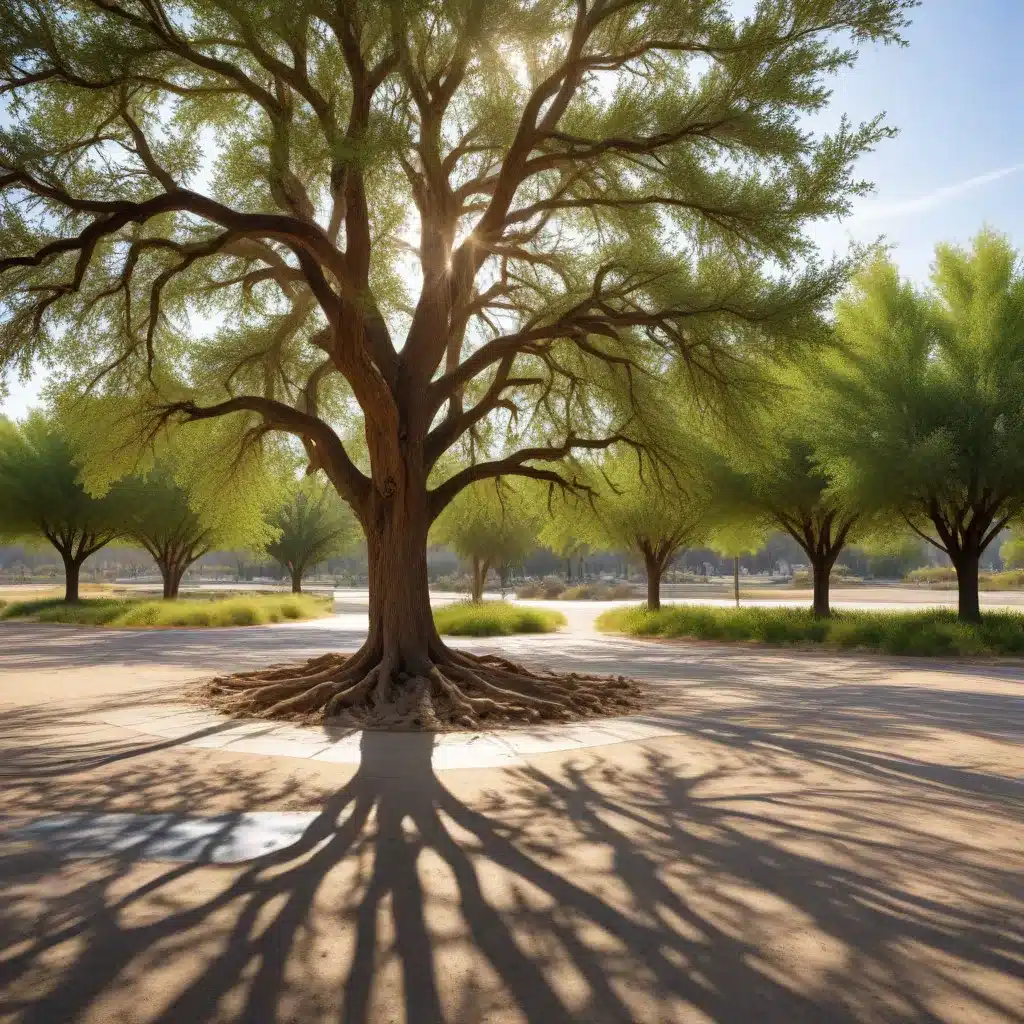
As an experienced tree care specialist in Palm Beach County, I’ve witnessed firsthand the challenges that property owners face when it comes to maintaining lush, healthy landscapes amidst the region’s unpredictable weather patterns. In recent years, prolonged droughts have become a growing concern, forcing us to rethink our approach to landscape management and tree preservation.
Adapting to a Drier Climate: Embracing Water-Wise Landscaping
One of the most effective ways to combat the impacts of drought is through the implementation of water-wise landscaping strategies. By carefully selecting drought-tolerant plant species and incorporating water-efficient irrigation systems, we can create visually stunning yet resilient commercial landscapes that thrive even during periods of limited rainfall.
When it comes to plant selection, I always recommend incorporating native and Florida-friendly species that are adapted to the region’s unique climate. These hardy plants not only require less water but also tend to be more resistant to pests and diseases, reducing the need for chemical interventions. Some of my personal favorites include Firecracker plant, Coontie, and Simpson’s Stopper – all of which add vibrant pops of color while maintaining their lush foliage with minimal water input.
Alongside thoughtful plant selection, investing in efficient irrigation systems can make a significant difference in water conservation efforts. By transitioning from traditional spray irrigation to drip or micro-irrigation, we can dramatically reduce water waste and ensure that every drop is directed precisely where it’s needed most – at the roots of the plants. Additionally, incorporating smart controllers and soil moisture sensors can help us fine-tune our watering schedules, delivering just the right amount of water at the optimal times.
Storm Preparation: Safeguarding Trees Before Nature Strikes
In addition to water-wise landscaping, ensuring the resilience of our trees is crucial, especially in the face of increasingly severe weather events. As a tree care specialist, I’ve seen firsthand the devastating impact that hurricanes, tropical storms, and even intense thunderstorms can have on our urban forests.
One of the most important steps in storm preparation is proactive tree maintenance and pruning. By regularly inspecting our trees and addressing any structural weaknesses or overgrown branches, we can significantly reduce the risk of damage during high winds and heavy rainfall. Proper pruning techniques, such as thinning the canopy and removing deadwood, can help trees withstand the forces of nature more effectively.
Another critical aspect of storm preparedness is safeguarding the root zones of our trees. By ensuring adequate soil moisture and avoiding soil compaction in the critical root zone, we can help strengthen the trees’ anchors and increase their overall stability. This can be achieved through regular deep watering, the application of organic mulch, and the avoidance of heavy machinery or construction activities near the tree’s drip line.
Eco-Friendly Tree Care: Embracing Sustainable Practices
As we strive to create drought-resilient and storm-resistant landscapes, it’s essential that we also prioritize eco-friendly tree care practices. By adopting sustainable methods, we can not only protect the health and longevity of our trees but also contribute to the overall environmental well-being of our community.
One of the key sustainable practices I advocate for is the use of organic, slow-release fertilizers. These nutrient-rich amendments not only nourish the trees but also improve soil health, promoting a thriving ecosystem for beneficial microorganisms and mycorrhizal fungi. This holistic approach to tree nutrition helps to build resilience, reducing the need for chemical interventions and minimizing the risk of environmental contamination.
Additionally, I’m a strong proponent of integrated pest management (IPM) strategies, which prioritize natural and biological controls over the use of harsh pesticides. By monitoring for pest infestations, implementing physical barriers, and leveraging the power of beneficial insects, we can effectively manage pests while safeguarding the overall health of our trees and the surrounding environment.
Collaboration and Community Engagement: Fostering a Greener Future
As a tree care specialist, I firmly believe that the key to creating drought-resilient and storm-resistant commercial landscapes lies in fostering strong partnerships and engaging with the local community. By collaborating with property managers, landscape architects, and municipal authorities, we can develop holistic, data-driven strategies that address the unique challenges faced by each property or neighborhood.
One example of such a collaboration is our ongoing work with the local water management district. By sharing our expertise and insights, we’ve been able to inform the development of water conservation programs and educational initiatives that empower property owners to make informed decisions about their landscape management practices. These partnerships have been instrumental in driving the adoption of water-wise landscaping and promoting a deeper understanding of the importance of tree preservation.
Furthermore, I’ve found that engaging with the local community, through workshops, public events, and online resources, can be a powerful way to inspire and educate homeowners and businesses about the benefits of sustainable tree care and landscape management. By sharing our knowledge and providing practical tips, we can help cultivate a shared sense of responsibility for the stewardship of our urban forests and green spaces.
As we navigate the challenges posed by drought and extreme weather, it’s clear that a comprehensive, collaborative approach is essential for ensuring the long-term resilience and sustainability of our commercial landscapes. By embracing water-wise strategies, prioritizing storm preparedness, and championing eco-friendly tree care practices, we can not only preserve the aesthetic beauty of our communities but also safeguard the invaluable environmental benefits that our trees provide.
At Lantana Tree Service, we are committed to being at the forefront of this important work, sharing our expertise and collaborating with both property owners and local authorities to create a greener, more resilient future for Palm Beach County. I encourage you to explore our website and reach out to learn more about how we can partner to transform your commercial landscape into a true oasis of sustainability and environmental stewardship.


